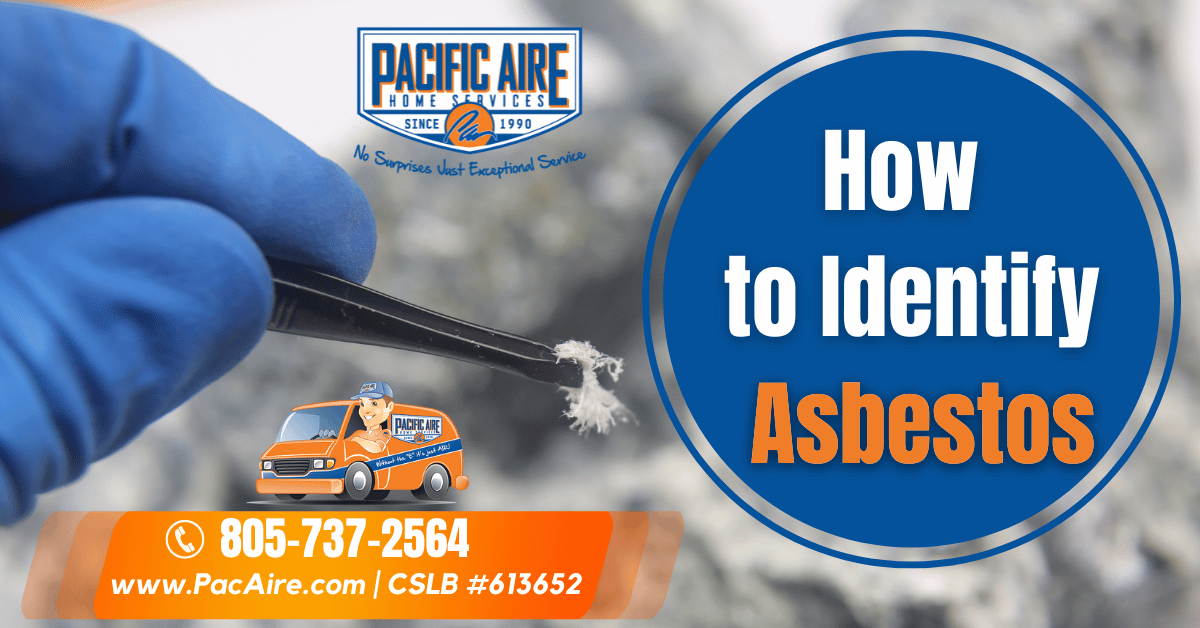Asbestos, a once widely used mineral fiber in building materials, poses significant health risks when its fibers are released into the air and inhaled. As a homeowner, it’s crucial to be able to identify the presence of asbestos in your home to protect yourself and your family. In this blog post, we will explore effective methods and key indicators that can help you identify asbestos-containing materials within the comfort of your own home.
Understanding Asbestos:
Before diving into identification techniques, it’s important to grasp what asbestos is and why it is dangerous. Asbestos is a naturally occurring mineral known for its heat resistance, strength, and insulating properties. It was widely used in construction and insulation materials until the late 1970s when its health hazards became evident. When asbestos-containing materials are disturbed, tiny asbestos fibers can become airborne and pose a severe risk to human health, potentially leading to lung cancer, mesothelioma, and other respiratory diseases.
Assessing the Age of the Property:
One of the initial steps in identifying potential asbestos at home is considering the age of the property. Asbestos was extensively used in construction before the 1980s, so if your house was built or renovated during that period, there is a higher likelihood of asbestos-containing materials being present.
Visual Inspection:
A thorough visual inspection can help you spot potential asbestos-containing materials. Keep in mind that visual identification alone is not definitive, but it can raise suspicions and warrant further testing. Look for materials commonly associated with asbestos, such as insulation around pipes, old vinyl floor tiles, textured or “popcorn” ceiling coatings, and insulation materials like fiberglass with a grayish or whitish appearance. Be aware that not all materials will be easily identifiable, as asbestos can be concealed within layers or coatings.
DIY Testing Kits:
If you have concerns about specific materials, you can opt for do-it-yourself asbestos testing kits. These kits typically include detailed instructions and all the necessary equipment to safely collect a sample. Follow the provided instructions precisely, wearing protective gear such as gloves and a mask, and collect a small sample of the material in question. Send the sample to an accredited laboratory for analysis. It’s crucial to choose a reputable lab that specializes in asbestos testing to ensure accurate results.
Professional Asbestos Inspection:
Engaging the services of a licensed asbestos inspector is the most reliable and comprehensive way to identify asbestos in your home. These professionals have the expertise and experience to conduct a thorough inspection, collect samples following strict safety protocols, and send them to accredited laboratories for analysis. They can also assess areas that are difficult to access or inspect hidden spaces where asbestos may be present. Professional inspections provide accurate results and peace of mind.
Consider Building History and Documentation:
Consulting building history and documentation can provide valuable insights into the presence of asbestos. Review architectural plans, renovation permits, and maintenance records to determine whether asbestos-containing materials were used during construction or renovation. If such documentation is unavailable, consider contacting the local building department or engaging professionals who specialize in asbestos inspection to help access relevant records.
An accredited and trained professional should be hired to remove asbestos. Since asbestos fibers are released into the air, trained workers know how to look for them. It is actually more dangerous to take a sample incorrectly than to leave it alone.
Asbestos Encapsulation And/Or Removal
Asbestos can only be eliminated through abatement. Fibers of asbestos can be removed from indoor air by removing asbestos.
Homeowners should not attempt asbestos removal on their own since it is a challenging and unique project. Do-it-yourself asbestos abatement should be avoided to prevent exposure to asbestos. Asbestos removal is a specialty of Pacific Aire. Our technicians set up containment areas during preparation. Air filtration systems purify the air during the removal process using gloves and goggles.
We must perform a thorough removal. Some contractors only remove asbestos ductwork and leave the vent boot behind when doing asbestos ductwork. Your home still contains asbestos as a result.
It is necessary to soak asbestos-containing materials during asbestos removal. The asbestos waste must be wet before being double bagged and enclosed in a plastic bag. Label the container and make sure it is leak-proof. Asbestos waste must be disposed of in special landfills.
Identifying asbestos at home is crucial for maintaining a safe and healthy living environment. By understanding the nature of asbestos, conducting visual inspections, utilizing DIY testing kits, and seeking professional assistance, you can identify potential asbestos-containing materials in your home. Remember, if you suspect the presence of asbestos, it’s always best to consult professionals for accurate testing and guidance. Prioritizing safety and taking proactive measures will help protect
You can rely on Pacific Aire for quality asbestos abatement. For more information about asbestos removal, please contact our helpful representatives.
Visit https://bit.ly/pacificaire_acrepair or call us at 805-737-2564 to schedule your AC Repair today!


